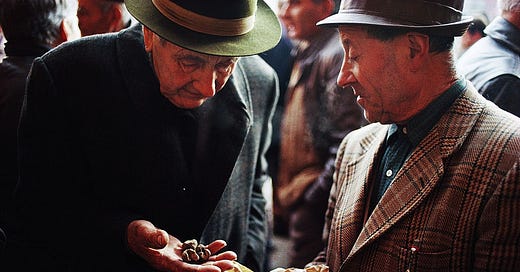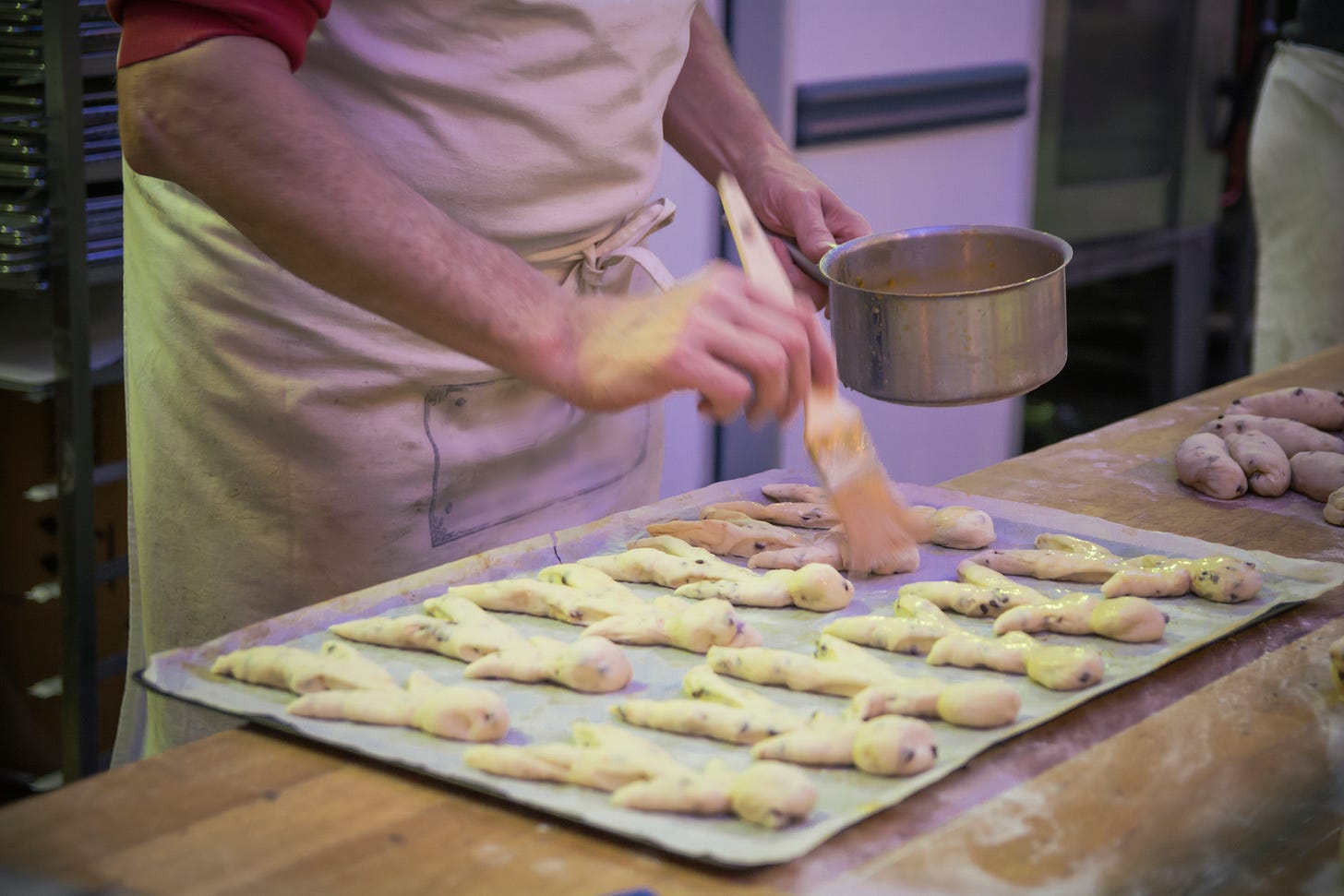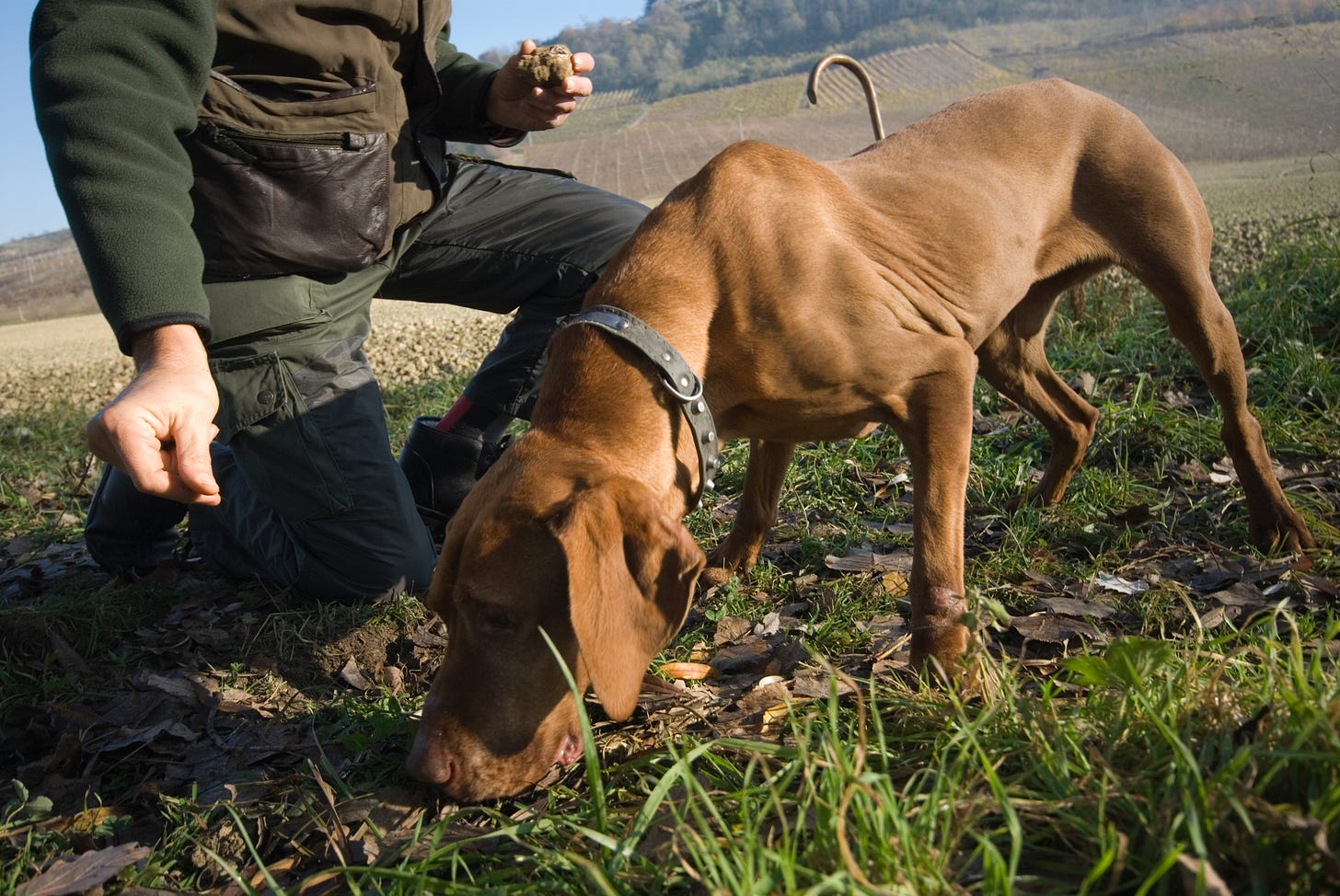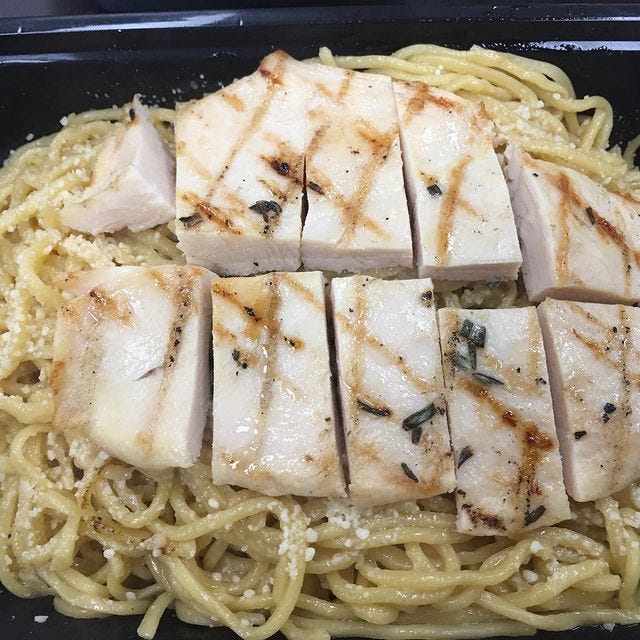If you haven’t become a paid subscriber yet, please do! I need to buy the fuel to keep the train running.
Falling for the Little Bread Man
When we locked eyes in that pâtisserie two winters ago, it wasn't love at first sight. But it was damn close. Above ample brioche cheeks, rosily glistening under a golden egg glaze, gazed two chocolate chip eyes. Was I imagining things, or was he winking at me? I had to ask the baker his name.
"Un mannele," she responded matter-of-factly, pulling him off a pile of croissants with her tongs, depositing him into a paper sack and into my waiting hands. And just like that, the most enchanting milkbread man had walked into my life.
Since our first meeting, I have learned that, each year in late November, my coup de cœur descends on lucky towns across Germany and France’s Alsace region to herald in the winter holiday season, his chocolate chip waistcoat buttons bursting with cheer. The little gentleman-shaped sweetbread is known by many names: mannele (“little gentleman” in Alsacien), Stutenkerl (“sweetbread fellow” in German) and St. Nicholas (in honor of the French and German Father Christmas).
Most admirably, these sweet fellows are as diverse as their pseudonyms. Sink your teeth into the airy dough of a “mannele nature,” and you’ll find he’s true to his name: nakedly “au natural” without a single chocolate chip for modesty. When dipped in an espresso or a mug of hot chocolate on a chilly morning, a mannele nature transforms from his natural springy state into his ultimate form: tufts of meltable clouds, saturated with hot drink.
A “mannele aux pépites de chocolat,” on the other hand, is speckled inside and out with chocolate chips. The sugariest of their mannele brethren, these extravagant gentlemen offer a faint but delicious resistance at first bite, their constellation of chocolate reinforcing their pillowy structure with an extra density.
In Germany, I’ve heard tell that mannele are dotted with raisins, an exotic choice that I hope to one day experience. But tempting as these all these fellows are, in my book they will always humble in comparison to what, for me, has become the classic mannele. Just the right amount of sweet: it’s no wonder I fell head over heels for him when he seduced me from that bakery shelf. 🇫🇷
The ‘Erotic Virtue’ of Underground Mushrooms
By Marta Biino
Growing up in Piemonte, in Northwest Italy, for me truffle season felt like the beginning of the holiday season. In the fall and early winter, restaurants filled up with patrons ready to spend thousands of euros to have flakes of the fragrant ingredient grated over pasta, fondue, and even ice cream.
In Piemonte, people tend to only eat the local white truffles, an extremely rare, extremely expensive variety - this year, market price in the US reached $4,500 a pound - that is very aromatic and pungent, with a luxurious quality to it. (Other regions of the world have other varieties that are highly prized in their own locales.)
Truffles are technically mushrooms, and as such they grow in moist and shadowy environments, but these grow underground. Unlike mushrooms, which pop up easily, truffles require particular conditions, and live in symbiosis with specific kinds of trees, attached to their roots, exchanging nutrients.
Varieties depend on color, taste, and ripening period. The majority of truffles grow in the fall and are different shades of black. But there are also summer truffles, as well as burgundy and, of course, white truffles.
Truffle hunters need the help of animals with a keen nose to find their prey. While you may have seen a disheveled Nicolas Cage with his beloved truffle pig in “Pig” recently, the truth is that dogs are much more popular for hunting truffles.
“The pig is a great hunter, but it can also become dangerous,” said Dr. Michele Fontefrancesco, an anthropologist from the University of Gastronomic Studies in Piemonte, Italy. “Pigs tend to bite the truffles they find, and it’s hard to get them to stop eating.”
Experts say humans (and pigs and dogs) are attracted to the chemicals that give truffles their peculiar, funky smell. What exactly makes the smell alluring is still under study, but history teaches us that truffles are considered one of the most potent aphrodisiacs in the world. Anthelme Brillat-Savarin, said truffles have “an erotic virtue.” If someone wants to take you out for a truffle dinner, you know what they’re up to.💖
If you enjoy the newsletter today, please forward it to someone who’d enjoy it, and tap the heart icon above or below, which will help me reach more readers. I appreciate your help, y’all!
This newsletter is edited by Katherine Spiers, host of the podcast Smart Mouth.
A TableCakes Production.
Want to contribute? Here are the submission guidelines.







